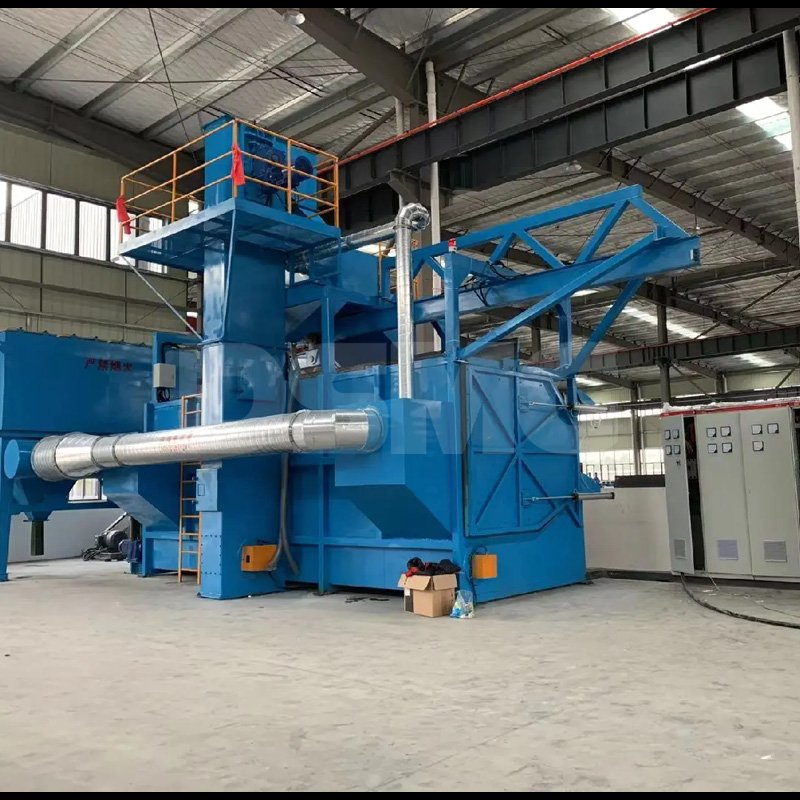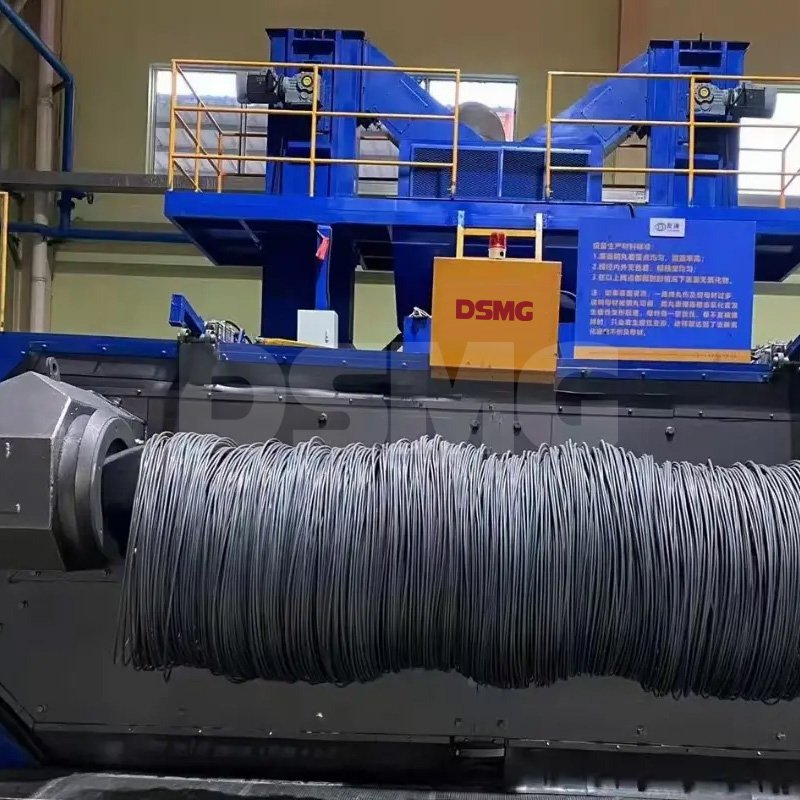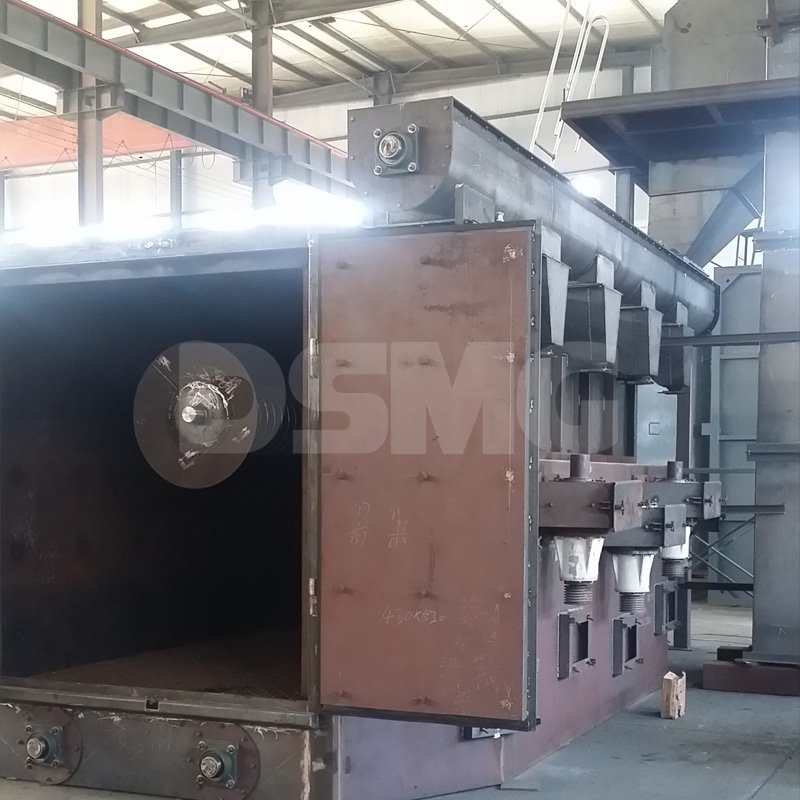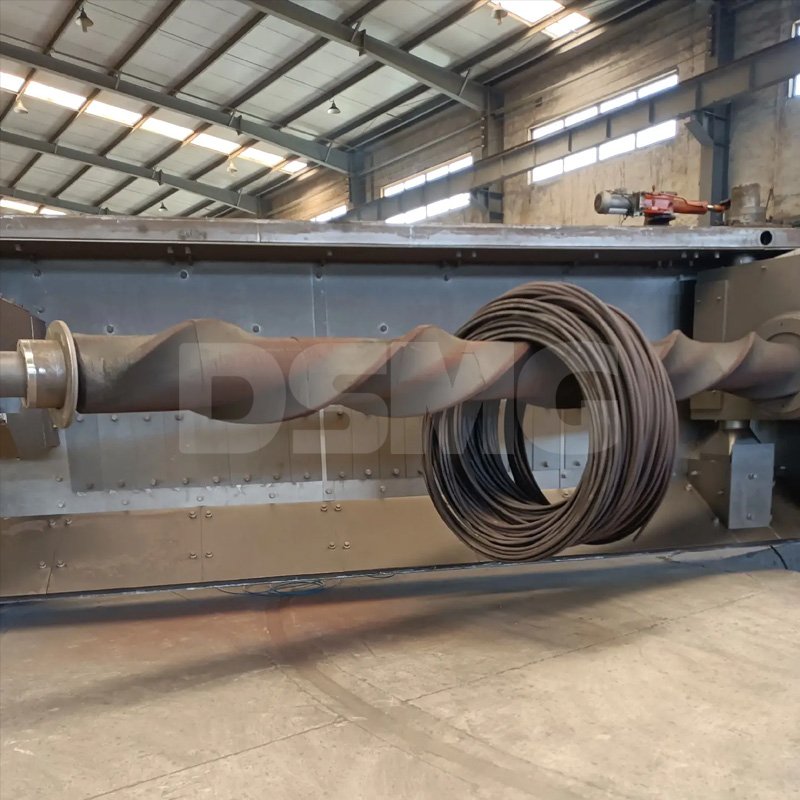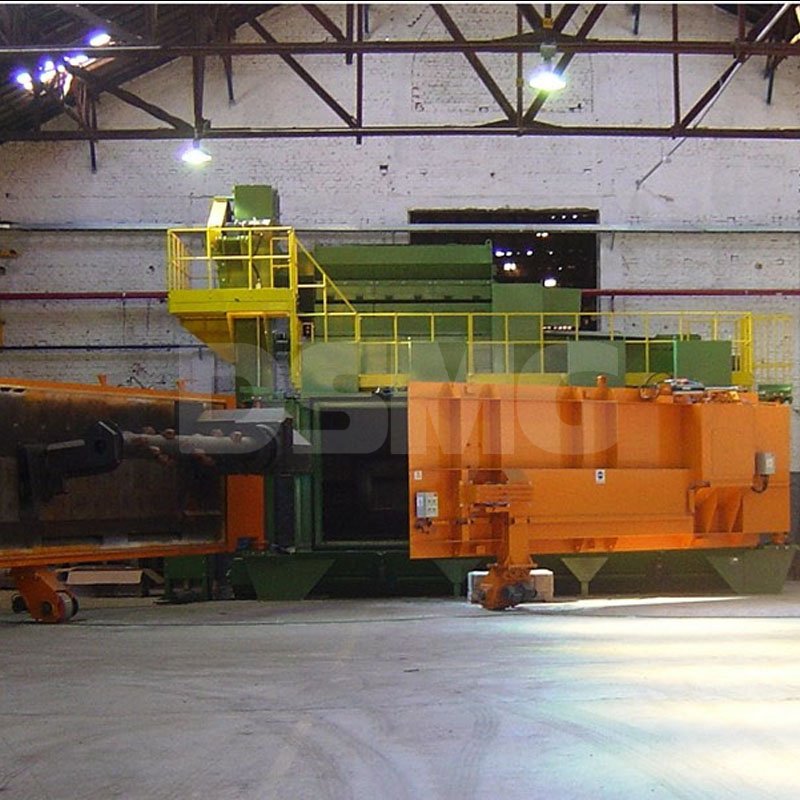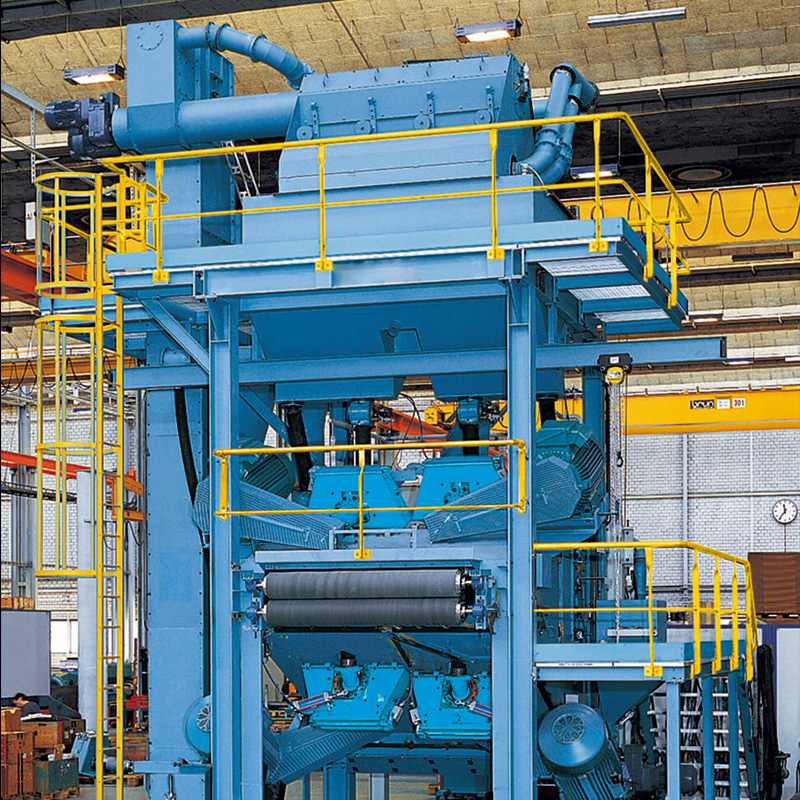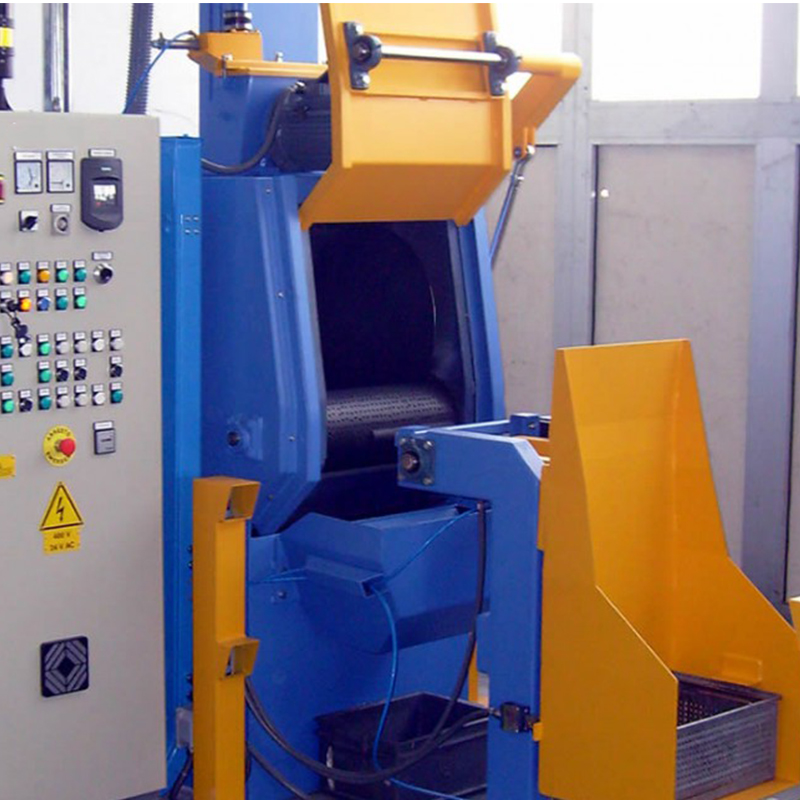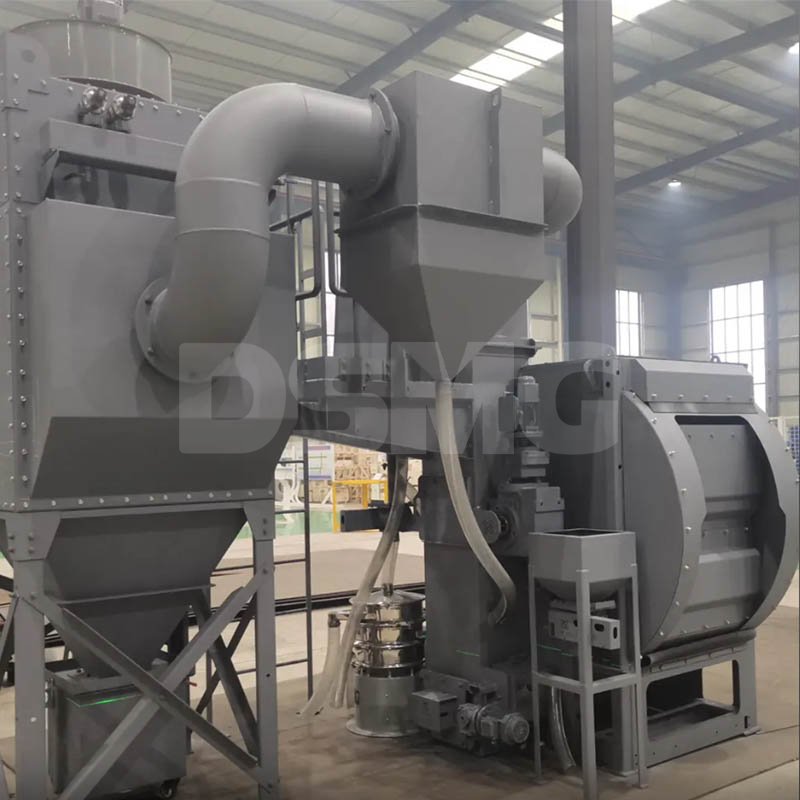The wire shot blasting machine constitutes an enclosed working compartment. Multiple shot blasting units are arranged externally, and the layout of these units guarantees the coverage area of pellet projection so as to enhance the projection efficiency. The shot blasting chamber is hermetically sealed to prevent any harm to personnel caused by flying pellets. Meanwhile, it is fabricated from steel plates with excellent impact resistance.
The gate of the shot blasting chamber is equipped with an operable cantilever, and its operating mechanism typically adopts a frequency conversion speed regulation device.
The mandrel is the key component within the shot blasting chamber, serving as the carrier for the placement and movement of the wire. For the purpose of enabling the coil to unwind evenly, a specific number of bosses are distributed in a spiral pattern within the effective length on the outer surface of the mandrel. Initially, the wire is loaded onto the end of the mandrel. As the mandrel rotates, each boss generates a spiral rotational motion. The mandrel is capable of rotating in both clockwise and counterclockwise directions, which can sequentially push the wire to the other end and ensure its even distribution on the mandrel. Given that the outer surfaces of the mandrel with bosses or the crankshaft are uneven, when the mandrel rotates, it can cause local parts of the coil to rise and fall, thereby enabling all parts of the wire to be impacted by the pellets.
The gate of the shot blasting chamber not only needs to be sealed but also has to bear the load of transporting the wire. The requirements for the gate are as follows: smooth operation, flexible actuation, and excellent sealing performance. There are either one or two gates for the shot blasting chamber. When one gate is closed, the other must be opened for loading and unloading operations, which can improve the working efficiency of the shot blasting machine.
 中文版
中文版


